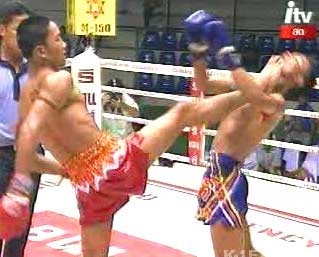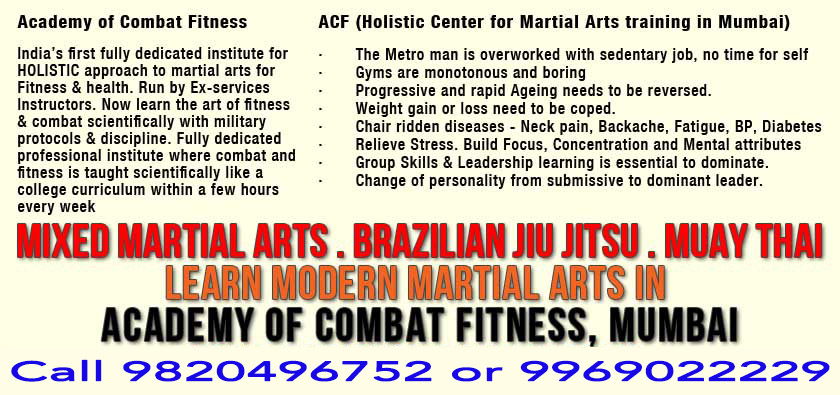Muay Thai Boran - Muay Luesee
The “Indian Connection” by Marco De Cesaris
The re-discovery of the ancestral style of Muay Boran. Thanks to the long and exhaustive work done in the past years by Professor Paosawath Saengsawan, the directors of the University of Rajabat, with the cooperation of the Technical Director of the IMBA, Marco De Cesaris (a lecturer at that university), the style of Muay Boran that, according to all the experts, can be reasonably considered as the oldest codified style, is coming back into the light in its characteristic elements. The historical figure who represents these characteristics—and from which the name of the style comes—is the mythical ascetic Luesee, a wise man who, according to some, embodies the existent common elements in the thousand-year old Indian culture and the Thai “daughter”.
From the Therapeutic Art to the Martial
Being a truly archaic style, Muay Luesee has come to us incomplete and fragmented; however, its fundamentals are still studied in all the schools of Thai Physical Education, no longer under the martial aspect, rather as an elevated form of curative and strengthening gymnastics. The similarities between the gymnastic exercises codified by Luesee and Indian Yoga are varied and, in some cases, amazing given that during the past centuries the two styles were developed independently: today, the therapeutic postures that make up the Luesee method number 127, of which 80 are archaic and the rest go back to a time that one can place between the end of the 18th century up to the mid-19th century. The system involves the execution of the various positions in accord with precise linking, which are studied to develop the energy flow or to cure concrete illnesses. (Within the channels called “Sen”, also studied in Nuad Paen Thai Boran, or traditional Thai massage. For that, see box).
The majority of the offensive and defensive movements of the martial style of Luesee, presuppose great control of the body and a strong sense of balance, abilities developed through the continuous practice of the “Thai yoga” positions that make up part of the aforementioned 80 primary sequences. Without the relaxation and loosening abilities that the various positions allow one to acquire, it is not possible to execute the complicated and at times acrobatic movements that we find in the archaic style of Muay Luesee fighting.
An Elusive and Acrobatic Style
In the profile of the technical study of Muay Luesee, some of the style’s fighting principles can be found in the most ancient variations of some Mae Mai that are still practiced today. The use of the hard and resistant parts of the body, along with sophisticated strategies of movements (footwork), immediately show a clear idea of the purely martial aims of this ancestral form of Muay Boran.
For example, the head—and in particular, the hard, frontal part of the cranium—is utilized to strike in hand-to-hand combat situations or to throw oneself against the adversary with unpredictable jumping techniques from the long distance (in fact, the Burmese Boxers still use this strategy a lot); the elbows and the knees (often together) are used a lot, sometimes jumping over the adversary or using a leg as a support in order to climb over him and strike him from unusual positions. Furthermore, the style has an abundance of flying attacks, which come from the belief that an assiduous, ascetic practice of the Luesee postures can, among the various benefits, develop levitation abilities; the punches are executed using various parts of the hand and, if possible, jumping over the adversary or using the energy of his strikes (especially the kicks), absorbing the impact with special deflecting techniques in order to later raise oneself and strike from above downward, taking advantage of the full force of gravity and making defenses more difficult.
Finally, the capacity of the followers of Luesee’s style to attain knowledge of the vital parts of the human body is not of least importance: in fact, precisely because of constant and long training focused on the “yoga” postures, the expert practitioner can mentally draw a map of the vital points of the body of the adversary, striking with impact angles, weapons, and adequate techniques to make the attacks more effective, even in the stressful conditions of combat.
Studying the Mae Mai and the Look Mai through the “filter” of the ascetic style offers the modern practitioner a key to go much more deeply into his Art than could have been imagined before: the “Thai yoga” techniques along with the map of the sensitive points offered by the study of the Sen, make the traditional forms a true treasure chest of martial knowledge and the real base of the whole Muay Boran system.
The Nuad Paen Thai
The theoretical fundamentals of the Luesee postures, as well as of Nuad Pean Thai, or Thai massage, are based on the existence of invisible lines of energy flow that run through the body, called Sen: the ten principle energy planes are studied in a particular way in traditional Thai massage. The principle Acupuncture points are situated—according to the theory of Nuad Paen—on the Sen lines, which, if studied correctly, offer a map of the vital points of the human body, as much for therapeutic objectives as martial. The origins of this theory are Indian, and the legendary founder of the art of Massage in Thailand is Indian as well, a doctor from the north of India, Jivaka Kumar (Ishivago Komarpaj, in Thai). Kumar was a contemporary of Buddha and acquired notable fame in his motherland some 2500 years ago. Just as occurred with the archaic Thai martial traditions, it is impossible to find written evidence of the development of the massage technique and the influences of the principles of Indian Yoga due to the destruction suffered by the ancient Thai capital of Ayuddhaya in 1767 at the hands of the invaders from Burma. In any case, the Indian influence in the current use that the Nuad Paen Thai masters still make of a form of “Yoga massage” is evident, following a refined technique that exploits in the best possible way the knowledge of the energy flow and pressure points typical of the ancestral Indian tradition.
Welcome to ACF - Choose to Change your Life!
To find out more about our courses, you are requested to call us and speak to Sasmira at 9820496752
- A VISIT can then be scheduled to the Academy on a Sat or Sun from 8am to 5pm by prior appointment. Depending upon your needs and requirements, we shall advice on tailormaking a program course for you, choosing from various program options. You shall be counseled extensively by our expert counsellors at no fee for either visit or counseling. Photo ID will be required for entry into the Academy for purposes of security.
- THE FEE will depend upon the time slot, course selected, upon who trains you (Director, Multi Faculty or Instructors) and how many hours program selected by you) Fees are affordable considering the extensive facilities and resulting lifetime of change in personality change and combat dominance.
- JOINING OPTIONS: Thereafter its upto you to join or not. When your course begins, what time slot is desired and other factors may be resolved subsequently on telephonic discussions with our office.

